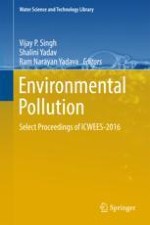2018 | OriginalPaper | Chapter
Recent Developments in Defluoridation of Drinking Water in India
Authors : Swati Dubey, Madhu Agarwal, A. B. Gupta
Published in: Environmental Pollution
Publisher: Springer Singapore
Activate our intelligent search to find suitable subject content or patents.
Select sections of text to find matching patents with Artificial Intelligence. powered by
Select sections of text to find additional relevant content using AI-assisted search. powered by
